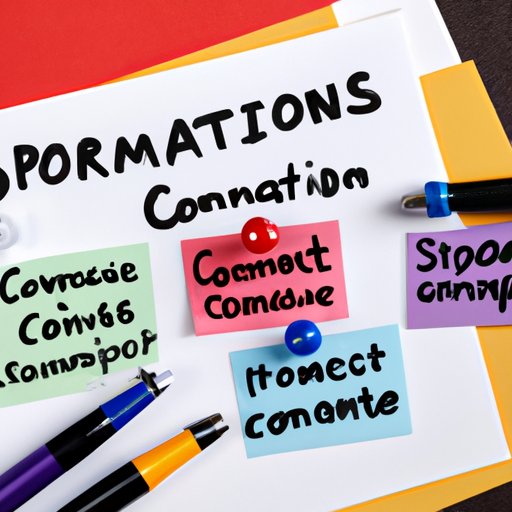
I. Introduction
For organizations, having a communications plan in place is vital for success. It helps to ensure that everyone is on the same page and that all messaging is consistent. However, to truly make a plan effective, multiple stakeholders need to be involved. In this article, we’ll explore the different types of stakeholders that should be included in communications planning.
II. Defining Communications Planning
Before we dive into involving stakeholders, it’s important to define what communications planning is. It’s the process of creating a strategy for how an organization will communicate with its target audience. This strategy includes key messaging, channels, timing, and the team involved in the execution. The purpose of having a communications plan in place is to ensure that everyone is working towards the same goals and that all messaging is consistent, regardless of the person or department involved in its creation. By having a plan in place, an organization can be confident that messages are reaching their audience as they intended, which can improve their chances of success.
III. Involving Stakeholders
When it comes to communications planning, it’s important to involve stakeholders from the start of the process. These stakeholders can include anyone who is affected by the messaging, such as management, employees, investors, and customers. By involving them, you can benefit from their unique insights and perspectives, which can help shape your messaging to be more aligned with their needs and expectations. By doing so, you can ensure that your messaging is more likely to resonate and that you’ll receive the desired response.
IV. Involving Different Departments
In addition to involving stakeholders, it’s important to involve different departments within your organization. Departments such as marketing, public relations, and customer service can play crucial roles in shaping your communications plan. For example, marketing can provide insights into messaging and branding, PR can help with media relations, and customer service can provide valuable feedback on customer sentiment. By bringing together a cross-functional team, you can create a more cohesive strategy that includes all aspects of your organization and is more likely to be successful.
V. Involving External Parties
Another way to improve your communications plan is by involving external parties. These can be advertising agencies, influencers, or other partners who can help you extend your reach and impact. For example, partnering with an influencer can help you reach a new audience, while teaming up with an advertising agency can give you access to the latest trends and tools. By working with external parties, you can broaden your perspectives and gain new ideas that can take your communications plan to the next level.
VI. Industry Insights
Additionally, industry insights from trade organizations can help inform your strategy and ensure that your organization is in line with trends and best practices. By keeping up with industry trends, you can ensure that you are ahead of the curve and that your communications plan is relevant and effective. By involving industry experts, you can ensure that your plan is informed by the latest insights and that it is designed to meet current and future needs.
VII. Legal and Compliance
It’s also crucial to involve legal and compliance teams in your communications plan to ensure messaging compliance with laws and regulations. Failure to involve legal and compliance teams can result in significant financial and legal implications. For example, if messaging violates advertising rules, this can result in fines and legal repercussions. By involving legal and compliance teams from the start, you can ensure that your messaging is both effective and compliant.
VIII. Real-World Examples
Many organizations have successfully involved multiple stakeholders in their communications planning. For example, Airbnb has a communications team that includes personnel from marketing, PR, customer service, and government relations. This cross-functional team allows Airbnb to gain a wide range of perspectives and insights when planning their communication strategy, which has helped them become a successful global brand.
Another example is Procter & Gamble, who has a market research team that provides insights and data for their communications planning. This has helped them to design messaging that resonates with their target audience and creates a strong brand DNA.
IX. Conclusion
In conclusion, having a communications plan in place is crucial for the success of any organization. However, to maximize the effectiveness of the plan, it’s important to involve multiple stakeholders, including different departments, external parties, and industry experts. By doing so, you can create a more cohesive, compliant, and effective strategy that resonates with your target audience and helps you achieve your goals.





